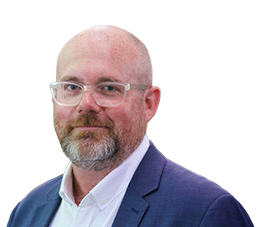Interview with ABC News Breakfast
NATE BYRNE, HOST: South Australia is such a focus at the moment, as well as – I haven’t even mentioned it today – you know it’s National Science Week, right?
BRIDGET BRENNAN, HOST: I know. It’s your favourite week of the year.
BYRNE: It’s my happy week. And being in South Australia on such an important subject that is so influenced by science, thought we’d better have a chat with the federal Science Minister. I’m joined now by Tim Ayres from Hobart. A very good morning to you, Minister. And also happy Science Week.
SENATOR TIM AYRES, MINISTER FOR INDUSTRY AND INNOVATION AND MINISTER FOR SCIENCE: Yeah, it’s Science Week. It’s a big week for Nate, but it’s a big week for the country, too.
BYRNE: It certainly is. Let’s start, though, if we can, with the toxic algal bloom. Just a few minutes ago, we were speaking with a scientist about what’s going on there, the importance of citizen science. What do scientists have to contribute to solving this problem?
AYRES: Well, I think that’s absolutely right. It certainly underscores the urgency of the climate and energy challenges for Australia, and the way in which, as our scientific understanding of the impact of climate change on Australia has increased, we know these kind of events are more likely to occur more often. And citizen science and engaging Australians broadly in our understanding of those issues should underscore the urgency of scientific research, the importance of it and, hopefully, it sends a message to girls and boys at school that science research and science careers really matter. They’re good jobs, but also it really matters for the future of the country and the future of the world.
BYRNE: It sort of brings to mind some of the crises we’ve had recently, like bushfires, floods. We often get people in the community to put up their hands to help out. Is this the same sort of thing when it comes to these big things – we need people to help out with the science?
AYRES: Yeah, it is. Find a way to get involved. There’s activities for Science Week, which would be a good entry point for Australians who want to get involved in their own way in citizen science. So it’s scienceweek.net.au. You can see what the local activities are. We really want to use Science Week this year in its 30th anniversary to really help Australians find a way into active participation in science as either a citizen or for girls and boys at school thinking about science careers and engineering careers and trades careers that get you involved in scientific research and science work.
BYRNE: We’re certainly going to be facing a lot of problems, and there’s going to be plenty of work for people with curious minds to help find solutions. You might not have this immediately to hand, Minister, but do you know of any science work that’s going on right now to help with the toxic algal bloom?
AYRES: I can give you an example. The Environment Minister wrote to the Threatened Species Science Committee just now to request that that committee focus its attention on the species that are affected by the algal bloom in South Australia. That means that they will give consideration to now and into the future engaging the science community in a focused effort on those species that are being impacted next year and the year after in an ongoing way. That mirrors the kind of response that the government took after the 2019 bushfires, for example, to make sure that we’re using our science capability to support the environment and to support species when events like this occur.
BYRNE: That’s part of the problem, right? A lot of scientists, well, tell me and they’ll tell you as well, we’ve been screaming about things like climate change for a long time and we’re seeing the effects now. Are we going to start listening when scientists say, “Hey, this is coming”?
AYRES: Yeah, well, absolutely. This is a government that, when elected, made this a priority. It’s been the subject of some public controversy in some quarters about whether or not climate change is a real thing, whether human activity has induced climate change. I mean, this may be controversial in some sections of the community; it’s not controversial as a scientifically established fact. And it does drive the government’s policy-making both in climate mitigation and climate adaptation but also in the approach that we’re taking to build the industries of the future for Australia.
The future of minerals processing onshore in Australia will be delivered through scientific research and through research and development that is public and private. It’s designed to secure Australia’s advantage as a low-emissions jurisdiction for industrial processing using our vast solar and wind resources to make sure that we’re contributing not just into lifting Australia’s role in global supply chains for minerals that are critical for clean energy processes, but also making a contribution ourselves through lower-emissions industrial processes to lowering the emissions profile of industries like iron and steel and industries like minerals processing. While these are economic and industrial questions, they are rooted in basic science, research and development activity, and Australia can and should play a leadership role here.
BYRNE: Thank you so much for joining us, Minister, especially on National Science Week. I hope you have the opportunity to go and have a little bit of fun with the science as well, but thank you. It’s very comforting to know that the government is going to be listening.
AYRES: It certainly will. Thanks, Nate.

